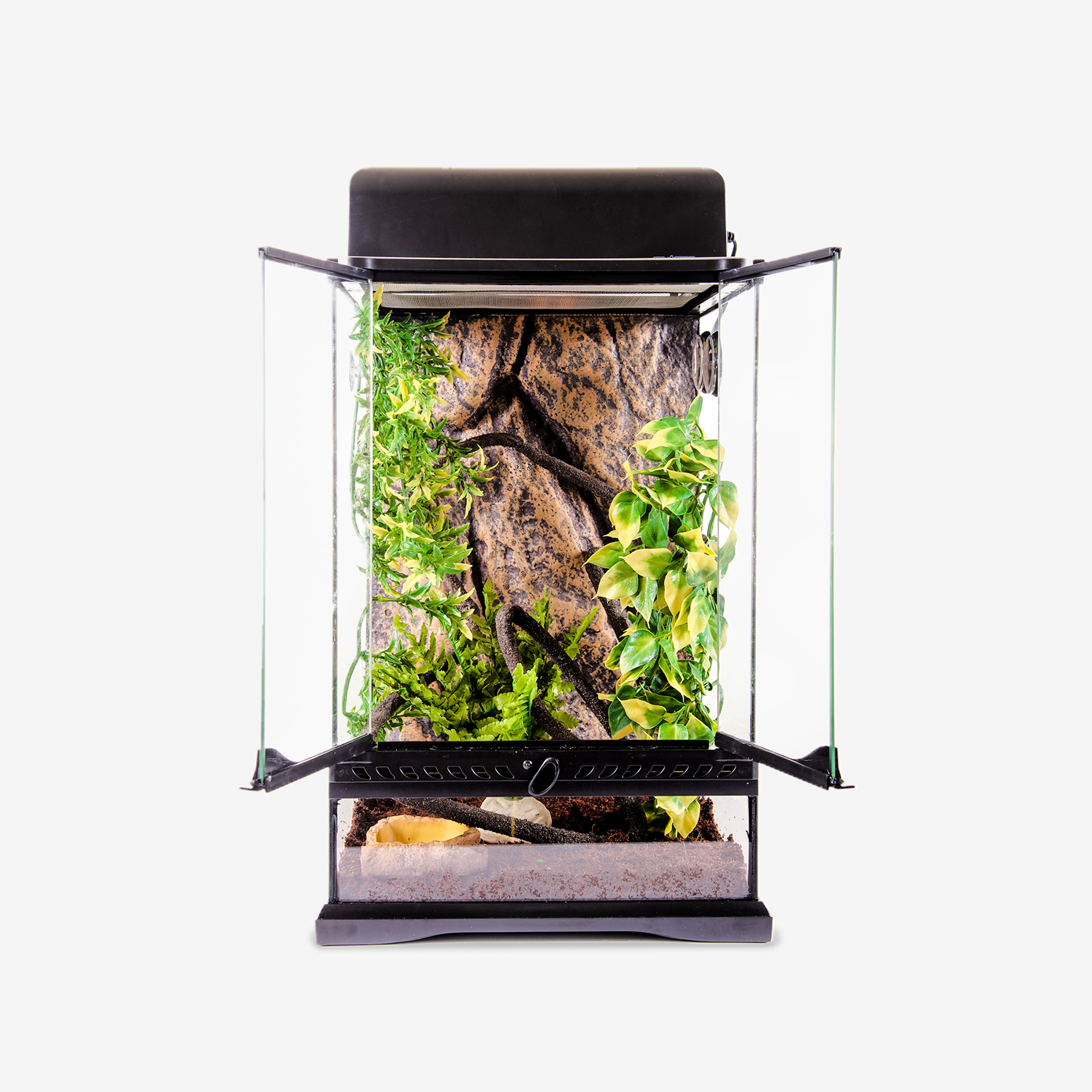

Warning: UVB bulb output declines over time, even when the visible light remains. (Unfortunately I do not currently have access to reliable data on the approximate placement of the Zoo Med Reptisun T8 5.0 or Arcadia T8 6% for less-pigmented leopard geckos.) Mesh obstruction reduces UVB output by 30-40%, so adjust your basking platform placement accordingly:įor best results, add 1-2″ to the above distance to account for your gecko’s height. If you don’t have a Solarmeter 6.5 on hand, here is a rough estimate of the optimal distance between your basking platform and UVB lamp for leopard geckos. *UVI measurements are per recommendations from Frances Baines, D.V.M. If using a Solarmeter 6.5, aim for a UV Index of no more than 0.5 – 0.7* at most. For them, use a weaker Zoo Med Reptisun T8 5.0 or Arcadia T8 6% to achieve the same benefit. Albino, patternless, and other less-pigmented morphs of leopard gecko are more sensitive to (and can be burned by) excess UVB.If using a Solarmeter 6.5, aim for a UV Index between 0.5 – 1.5* at most. For normal morph (“wild type”) and other well-pigmented leopard geckos, a Zoo Med Reptisun T5 HO 5.0 or Arcadia ShadeDweller 7% fluorescent tube should be used.However, mounting scientific evidence is proving this assumption incorrect and outdated - when offered, leopard geckos and other nocturnal species will bask under and benefit from UVB lighting.

Since they are most active when the sun is either weak or not present, they are not as dependent on UVA and UVB as diurnal species. Many leopard gecko keepers will tell you that leopard geckos “don’t need UVB.” This is partially true. Reptiles in particular benefit from exposure to UVA for their eyesight and UVB for healthy metabolism, specifically vitamin D synthesis and calcium metabolism. UVC destroys DNA and is blocked by Earth’s atmosphere, but nearly all animals on the planet have evolved to depend on the other two wavelengths. There are three types of ultraviolet radiation produced by the sun: UVA, UVB, and UVC. This is not unusual - many nocturnal species have been observed basking, especially in the morning. To simulate the change of the seasons, reduce the amount of light to 12 hours during winter.ĭaytime light is also nice for viewing occasionally leopard geckos will come out during the day to bask. According to the UV Tool by Frances Baines, light should be provided for 14 hours/day during the summer, which simulates their optimal photoperiod. In fact, having a light on in the tank helps regulate their day/night cycle, which is good for their mental health and stimulates appetite. While their eyes evolved for low light conditions, and they tend to be much more active during the night than during the day, this does not mean that they do not need lighting as part of their enclosure setup. Leopard geckos are crepuscular, which means that they most active at dawn/dusk. There is a common myth that because leopard geckos are “nocturnal,” they don’t need any light at all to see or function, and providing light will burn their eyes.


 0 kommentar(er)
0 kommentar(er)
